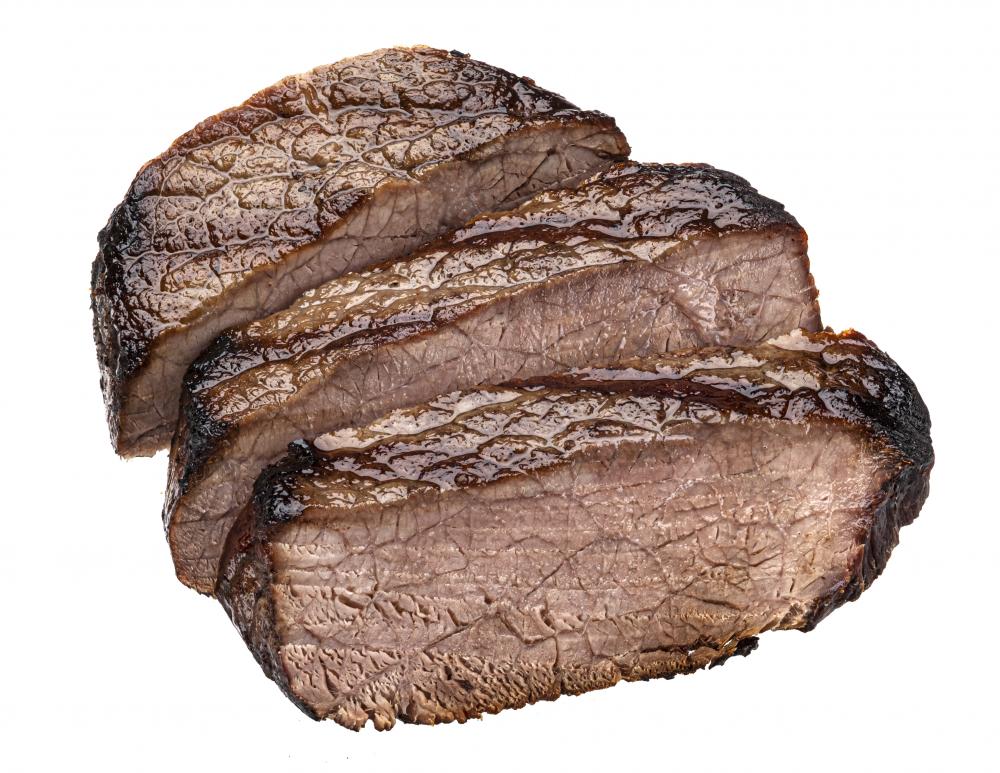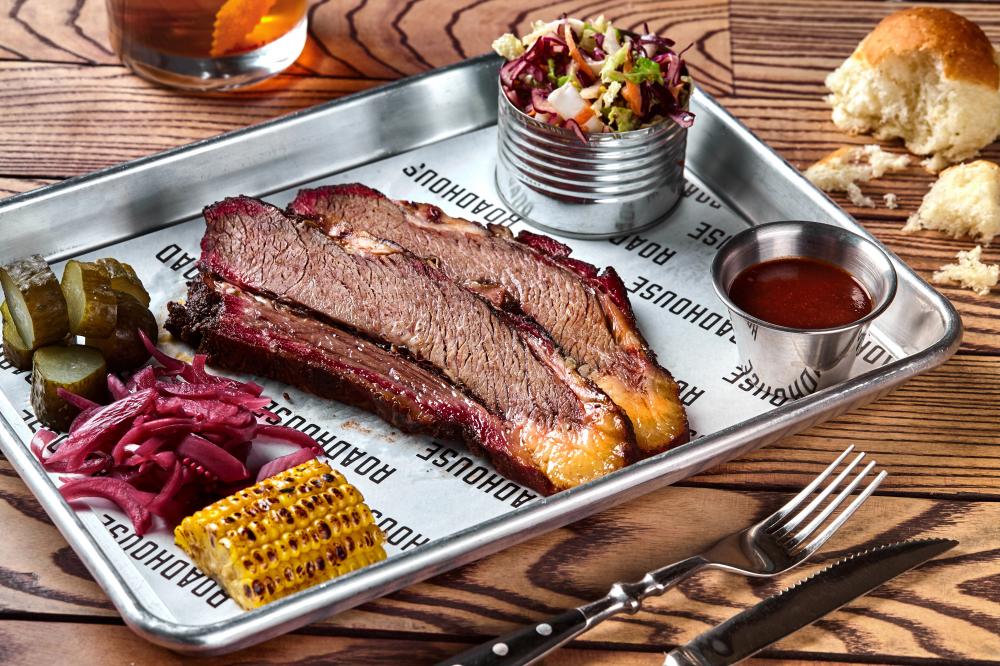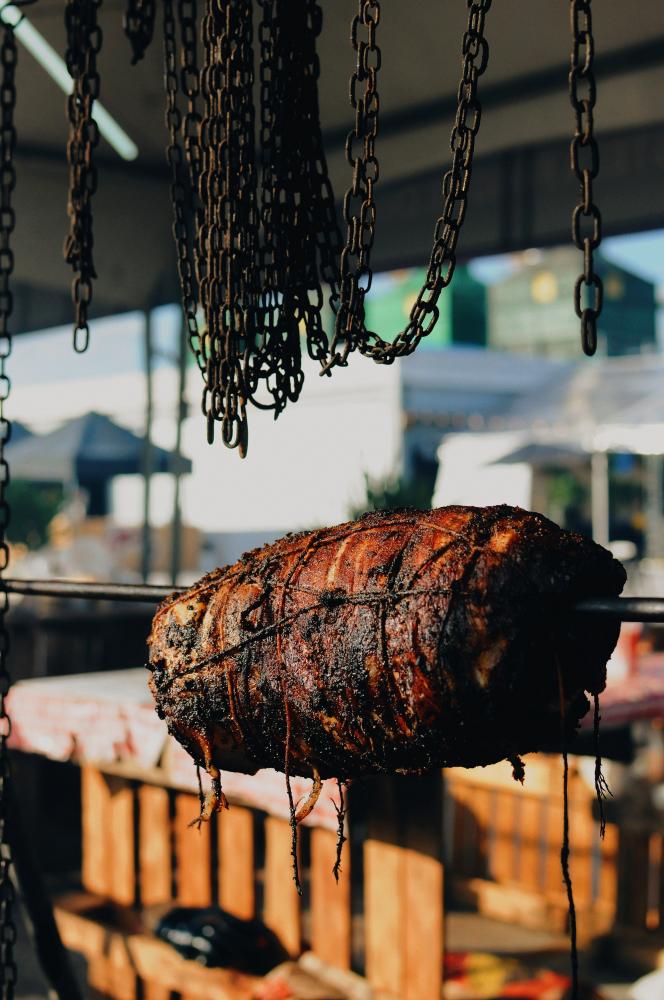
Understanding the Resting Phase
At Brisket Pro, we often field questions about the pivotal post-smoke step: How Long to Let Brisket Rest. It’s the crescendo after hours of meticulous smoking, where patience bears the fruit of perfection. This stage is not simply a pause in the action; it’s an integral part of the brisket’s journey to peak flavor and tenderness.
Resting allows the brisket’s juices, agitated and redistributed by the heat of cooking, to settle back into the muscle fibers. This process ensures each slice is moist and succulent. Imagine slicing into your brisket too soon, only to watch its essence pool on the cutting board–a heartbreak for any BBQ enthusiast.
We advocate for a resting period of at least one hour, though two hours is often the sweet spot for most brisket sizes. However, don’t shy away from extending this time, as we’ve experimented with and successfully rested briskets for up to eight hours, using insulated methods to maintain temperature without compromising the meat’s quality.
Methodology of Resting
Choosing Your Resting Technique
-
Resting in an insulated cooler, or the faux Cambro method, ensures temperature maintenance without cooking the brisket further. Wrapped in towels, the brisket stays warm, and cleanup is simplified by absorbing any stray drippings.
-
A Cambro, especially for those in competitive barbecue or catering, offers a professionally insulated environment for resting meats. These units can keep the brisket at an ideal temperature range for hours, ensuring it remains ready to serve without drying out.
-
For brisket pros with access to professional equipment, a steam cabinet can maintain moisture and warmth over extended periods, making it an excellent choice for restaurant settings or large events.
Regardless of the method chosen, remember the principle at heart: rest the brisket to allow for moisture reabsorption and muscle relaxation. This ensures the brisket remains juicy and tender, making your BBQ a memorable one.
Wrapped or Unwrapped?
Another common inquiry we address at Brisket Pro is whether to rest the brisket wrapped or unwrapped. Our experience leans towards resting it as it comes off the smoker – if you’ve wrapped your brisket during the cook, let it rest in its cocoon. The wrap acts as an insulator, trapping heat that facilitates carryover cooking, gently finishing the brisket to perfection.
Keeping the brisket wrapped during rest allows for the juices to stay close, mingling with the meat, enhancing flavor, and ensuring tenderness. It becomes not just a resting period but an extension of the cooking process that is gentle yet transformative.
Why Resting is Crucial
How Long to Let Brisket Rest isn’t just a question of time–it’s a query into understanding the science and art of BBQ. Resting isn’t optional; it’s as crucial as the smoking process itself. It’s about giving the brisket a chance to finish its journey, to settle and mature before it’s served.
Skipping this step, or abbreviating it, risks a brisket that’s less than its potential. The textures and flavors developed over hours of smoking can be compromised if the brisket is rushed to the plate. That’s why at Brisket Pro, we stress the importance of patience–a virtue that pays dividends in the form of the perfect brisket.
From a personal standpoint, there’s nothing quite like the anticipation built during the resting period. It’s a time for the cook to rest as well, reflecting on the process and anticipating the joy of sharing their creation. This period of waiting, of letting the brisket come into its own, is a fundamental step that we at Brisket Pro champion for every BBQ lover.
Exploring the Benefits
The benefits of resting brisket extend beyond just improved texture and flavor. It’s a practice that elevates your BBQ from good to great. By allowing the brisket to rest, you’re also giving yourself a buffer, a period to manage your time and prepare for serving.
During this time, as the brisket rests, its internal temperatures can continue to rise slightly, ensuring that thick, tough fibers break down into tender, succulent bites. It’s a continuation of the cooking process that doesn’t require heat, but patience.
Moreover, resting your brisket properly can be the difference between a memorable meal and a forgettable one. It’s an opportunity to ensure that every hour spent smoking the brisket culminates in the best possible outcome. At Brisket Pro, we believe that understanding and respecting the resting phase is what separates the amateurs from the pros in the world of BBQ.

What Temp To Pull Brisket and Put in Cooler
At Brisket Pro, we’ve dived deep into the heart of brisket mastery to bring you the ins and outs of achieving that fall-apart, mouth-watering perfection. One question that pops up frequently among our community is, “What Temp To Pull Brisket and Put in Cooler?” Let’s chew over this topic with our expert insights and personal experiences.
Understanding the Ideal Temperature
Pulling your brisket at the right temperature is crucial for that perfect tenderness and moisture. The magic number? That would be 195°F. However, the journey doesn’t end there. The carry-over cooking process continues to work its magic, bringing the internal temp up by a few degrees, ideally aiming for the sweet spot of 203°F. This is when the brisket achieves its peak texture and flavor.
As a seasoned pitmaster, I’ve learned to respect the power of patience. Pulling the brisket off the smoker doesn’t mean it’s ready to be devoured right away. This is where the cooler comes into play. But remember, “What Temp To Pull Brisket and Put in Cooler?” isn’t just about numbers; it’s about understanding the science behind the cooking process.
The Cooler Method Explained
Why Use a Cooler?
The cooler isn’t just for beers and sodas; it’s your brisket’s best friend when it comes to resting. Using a cooler to rest your brisket allows the meat to slowly come down in temperature, ensuring that all those juicy flavors are locked in, rather than evaporating into the ether.
How to Prepare the Cooler
- Pre-warm the cooler with hot water to create an insulated environment that gently coaxes your brisket through the resting phase.
- After pulling the brisket at 195°F and allowing it to reach 203°F through carry-over cooking, tightly wrap it in foil and a couple of towels for insulation.
- Place the wrapped brisket in the pre-warmed cooler, ensuring it’s snuggly fit to retain heat.
Resting your brisket in a cooler isn’t a step to be skipped. This method not only maintains the optimal serving temperature but also enhances the brisket’s flavor and tenderness by allowing it to reabsorb its juices.
Personal Insights and Tips
Through countless brisket adventures, I’ve found that resting is where the magic really happens. “What Temp To Pull Brisket and Put in Cooler?” is a question of balance. Pull too early, and you miss out on tenderness; pull too late, and you risk drying out your masterpiece.
Here’s a nugget of wisdom: Don’t rush the resting stage. I’ve let briskets rest in the cooler for up to 4 hours, and the result? Each slice was a journey through flavor town, with textures so tender, it nearly melted on the tongue.
And another pro tip: Always use a reliable meat thermometer. It’s your best ally in the quest for brisket perfection, ensuring you hit that target temp every time, without guesswork.
So, when you ponder on “What Temp To Pull Brisket and Put in Cooler?”, remember, it’s not just a number–it’s your ticket to brisket nirvana. Happy smoking, and may your briskets always be juicy!
The Importance of Resting Brisket
At Brisket Pro, we often encounter the question, How Long To Let Brisket Rest Before Cutting? The answer isn’t just a matter of time; it’s about understanding the science behind the rest. Resting your brisket allows the juices, which have been driven to the center of the meat during cooking, to redistribute throughout the brisket. This process not only enhances the moisture and flavor of your brisket but also makes it more tender.
From years of smoking and grilling, we’ve found that the ideal rest time falls between 1 to 4 hours, depending on the size of the brisket and the cooking method used. It’s a crucial step that should not be rushed; patience here can transform a good brisket into an unforgettable meal.
Our experiences, along with feedback from the Brisket Pro community, suggest that wrapping the brisket in butcher paper or aluminum foil and placing it in a cooler (without ice) can extend the resting period while maintaining a safe temperature. This approach also frees up your smoker or oven for other dishes, making it a practical tip for large gatherings.
Finding the Sweet Spot
Identifying the optimal rest time – How Long To Let Brisket Rest Before Cutting – involves considering several factors. Firstly, the size of your brisket plays a significant role. Larger briskets require a longer rest to ensure that the juices properly redistribute. Secondly, the cooking environment can affect the rest time. Briskets cooked in harsher, hotter conditions might benefit from a longer rest to recover from the intense heat exposure.
Many brisket aficionados swear by a minimum of 2 hours of resting, wrapped and nestled in a pre-warmed cooler. This method not only retains heat but also provides a controlled environment for the brisket to relax and reabsorb its delicious juices. It’s fascinating to observe how a brisket evolves during this period, transitioning from a robust, tough piece of meat to something exquisitely tender and flavorful.
We’ve also noted that the texture of the bark can be influenced by the resting period. A brisket rested properly will have a bark that’s distinct but not overly hard, creating a pleasing contrast to the tender meat within. This delicate balance between bark and meat is what many pitmasters aim for, and resting is key to achieving it.
However, it’s important to remember that every brisket is unique. The ‘perfect’ rest time can vary, and we encourage experimenting to find what works best for you. Keeping detailed notes on rest times and outcomes can be incredibly useful for refining your technique.
Anecdotal Evidences and Professional Insights
One memorable brisket experience involved a brisket that, by necessity, rested for nearly 6 hours. Initially concerned about over-resting, the result was surprisingly one of the best we’ve had. This longer rest allowed the flavors to deepen, and the meat was exceptionally tender. It was a vivid reminder of the potential benefits of extending the resting period beyond conventional wisdom.
Conversations with seasoned pitmasters have revealed a consensus that while there’s a minimum rest time, erring on the side of a longer rest often yields better results. These insights, combined with our hands-on experiences, reinforce the belief that mastering the art of resting brisket is as critical as the cooking process itself.
In conclusion, when pondering How Long To Let Brisket Rest Before Cutting, consider not only the technical aspects but also the transformative potential of this crucial step. Your brisket, and your guests, will thank you for the extra care and patience you invest in the process.

How long should brisket rest after cooking?
Here at Brisket Pro, we often say that the magic in brisket making doesn’t just lie in the smoking; it’s also in the resting. Allowing your brisket to rest after cooking is critical to achieving that moist, succulent tenderness we all crave. Through years of experience, we’ve found the ideal resting period to be at least one hour, but ideally two hours for most brisket sizes. This isn’t just a suggestion; it’s a culmination of tried and tested methodology that ensures your brisket doesn’t just taste good, but it’s restaurant-quality great. There’s a misconception that brisket can be cut into immediately after cooking, but this often leads to a disappointing, dry meal. Remember, patience is not just a virtue; it’s the secret ingredient to perfect brisket.
Have you ever tried extending your brisket’s resting time beyond the two-hour mark? It’d be interesting to hear your experiences. Feel free to share!
Do you rest a brisket wrapped or unwrapped?
That’s a question we get asked a lot here at Brisket Pro. Our approach? Rest it as it comes off the smoker. If your brisket was wrapped during its cook, keep it wrapped during its rest. The reason is quite simple – the wrap acts as an insulator, helping to trap in those beautiful juices and allowing for a type of carryover cooking that gently brings the brisket to its final state of perfection. Resting wrapped brisket allows for the meat to reabsorb its juices, enhancing the flavor and tenderness. It’s like giving your brisket a cozy blanket to ensure it stays warm and continues to develop in flavor. This isn’t just our opinion; it’s a method backed by countless successful brisket cooks.
How do you usually rest your brisket? Wrapped or unwrapped? Let’s discuss below!
Why put brisket in cooler?
At Brisket Pro, we’re all about unlocking the full potential of every brisket. Placing the brisket in a cooler post-cook might seem unconventional to some, but it’s a game-changer. The cooler acts as an insulated environment, allowing the brisket to rest properly without losing much heat. This method facilitates a slow decrease in temperature, ensuring the brisket remains juicy, tender, and full of flavor. It also locks in those desirable flavors we work so hard to achieve, rather than letting them escape as steam. Using a cooler for resting isn’t just a professional tip; it’s a tried-and-true technique that can elevate a home-cooked brisket to competition-worthy levels. Plus, it’s a great way to manage your time effectively, especially when coordinating a larger meal.
Have you tried the cooler method yet? If not, what’s holding you back? I’d love to hear your thoughts and concerns.
How do you hold a brisket for 12 hours?
Now, this is where we dive deep into brisket wizardry. Holding a brisket for an extended period, like 12 hours, requires a delicate balance of temperature, humidity, and airflow – something we at Brisket Pro have mastered over the years. The key is in creating an environment that maintains the brisket’s temperature without cooking it further. Using a combination of insulated coolers or professional warming cabinets (for those advanced enthusiasts or professionals), we can keep the brisket warm and moist. Wrapping the brisket in foil and then in towels before placing it in the cooler helps retain heat and moisture. For longer holds, a low-temperature oven or a smoker set at a very low temperature can work, but monitoring is crucial to avoid drying out the meat.
It’s a process that might seem daunting at first, but with practice, it becomes another tool in your brisket-making arsenal. Have you ever needed to hold a brisket for an extended time? What techniques did you use?
What is the significance of the resting period in brisket cooking?
The resting period in brisket cooking is not something to overlook; it’s absolutely pivotal to the end result of your hard work. During the cook, the heat forces the juices toward the center of the brisket, causing the muscle fibers to tighten and push out moisture. Resting allows these fibers to relax and reabsorb the juices, distributing them evenly throughout the brisket. This results in a cut that’s not only flavorful but also tender and juicy. It’s a period where science and patience intersect, transforming a good brisket into an exceptional one. Skipping or shortening the resting period robs the brisket of reaching its full potential. It’s a crucial step that underscores the importance of understanding both the science and the art behind BBQ.
Does the explanation clarify the value of the resting period for you? Or do you have a different perspective on its importance? Share your thoughts below; let’s get a conversation going!
Brisket Resources
- Smoking-Meat.com – A comprehensive website providing tips, techniques, and recipes for smoking various types of meat, including brisket.
- The BBQ Brethren Forum – An online community of barbecue enthusiasts sharing knowledge and expertise on all things BBQ, including brisket smoking and resting techniques.
- AmazingRibs.com – A trusted source for all things barbecue, offering in-depth articles, product reviews, and recipes, including tips on how to rest brisket for optimal flavor.
- Serious Eats – A food and cooking website known for its well-researched articles and recipes, including detailed guides on smoking and resting brisket.
- Texas Monthly BBQ – A resource dedicated to the art of barbecue, with a focus on Texas-style barbecue, including tips on resting brisket for the best results.
